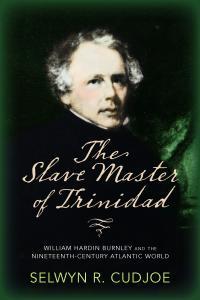Monsters & Monstrosities
By Dr Selwyn R. Cudjoe
February 15, 2021
"Freeing yourself was one thing; claiming ownership of that freed self was another."
—Toni Morrison, Beloved
Faris Al-Rawi was in a fighting mood last Monday. He was not afraid to outline the depths to which we, as a people, had descended. Calling on the Opposition to support the Evidence Amendment Bill to deal with the "monsters" who had committed a heinous act against Andrea Bharatt, he declared: "Today, we have an opportunity… to stop monsters."
Ascending to rhetorical heights, he chastised citizens who were trying to salvage a sliver of their humanity by speaking out against an inhuman strain that had arisen in our society:
"The crocodile tears on a pavement after a tragedy do not help people of T&T….[who] wrestle on a daily basis with monsters…who savage our children, our elderly, our loved ones. Today our country is engaged in a reactionary, though periodical, cycle of coming out of our traditional caves and making a cry and plea for a better society."
We cannot place the entire burden of the country's descent into a form of barbarity on one person, one political party, one religious organization, or one ethnic group. Like the anonymous narrator of Conrad's Heart of Darkness, we might say of Andrea's tragedy: "The meaning of an episode was not inside like a kernel but outside, enveloping the tale which brought it out only as a glow brings out a haze, in the likeness of one of these misty halos that sometimes are made visible by the spectral illumination of moonshine" (Conrad, Heart of Darkness).
Looking at the circumstances surrounding Andrea's death we should distinguish between monsters ("any imaginary frightening creature, especially one that is large and strange") and monstrosity, "something that is outrageously or offensively wrong." Monstrosity suggests the complex role monsters play within our society. One must constantly guard against their ill effects.
Most people would agree that anyone who takes the life of another, especially in the savage manner in which Andrea's life was taken, should be considered a monster. Contrariwise, how should we describe the action of people who allow billions of dollars to go unaccounted for years as we see in the THA and the National Lotteries Control Board that has failed to provide audited financial statements to the Auditor General since 2013. (see Reginald Dumas, "Through the Dark Fog that is the THA Fiances" (Newsday, February 8) and "NLCB Spending Billions without Audits" (Express, February 11 .)
How should we describe situations such as these? An accused person spends nine years in prison on remand for murder only to have his case dismissed because of a nocase submission; a person with 70 charges can function, unimpeded, for several years; or a police officer who repeatedly is a no-show in court where he is to present evidence against someone charged with a grievous crime and therefore that person has to be freed; or the absence of crime-fighting technologies like DNA and ballistic analysis. After ten years we are still trying to analyze DNA evidence in Sean Luke's murder.
And what about the situation in which the government rents a building from someone but it turns out that the government could have built five such buildings with the rents paid to the owner of the building? Is the recipient of such national largess a monster or do we define such a transaction as a monstrosity?
Can we equate these monstrosities with the monsters who we condemn today? Can we ever be certain that the monstrosities committed by those in power do not contribute to the behavioral dysfunctions we discern in the monsters we condemn? Can one be a causal factor of the other?
Monsters and monstrosities arise out of the same soil. The behaviors of each have as equally a horrible outcome on all members of the society. Increasingly, we are all engulfed within an expanding nexus of people and events that collectively drain our people of their humanity.
Andrea's brutal death has transported us into a liminal region of ghastly horrors, even though the country's overwhelming response to her funeral on Friday appeared to represent a collective exorcism. Try as we may, we can't help but feel that our conception of ourselves as humane and responsible beings have dropped a notch and we can only wonder what's in store for us as a society.
Monsters and monstrosity are evils on a spectrum that point to aspects of our moral and ethical behavior. In "What is a Monster?" Natalie Lawrence argues that public monsters "embody the cultural or psychological characteristics that we as a society find difficult to acknowledge." Might it not be that monstrosities so cloud our vision that we are unable to see how detrimental they are to the development of our society?
In an uplifting speech on Thursday night, the prime minister repudiated the notion that politicians are "brutish beasts" and condemned the "monstrous behavior" of some of our citizens. He lamented the diminishment of civility even among parliamentarians and averred that in order to have justice we must have respect for one another.
Andrea's tale has exposed the darkness that lies within the soul of our nation. The one illuminating response to that darkness was the tremendous outpouring of sympathy for Andrea's death, a questioning of how men treat women, and the recognition that all is not well in the nation. Such a tragedy forces us to look deeply into our national soul and examine where we have gone astray.
As we do so, we should look out for those monstrosities, figures with grotesque masks that camouflage their evil tendencies and thereby create a climate where monsters can thrive.
We may have won our freedom but have we claimed ownership of that freed self?
Prof Cudjoe's e-mail address is scudjoe@wellesley.edu. He can be reached @ProfessorCudjoe.
Share your views here...

The Slave Master of Trinidad by Dr. Selwyn R. Cudjoe
|

